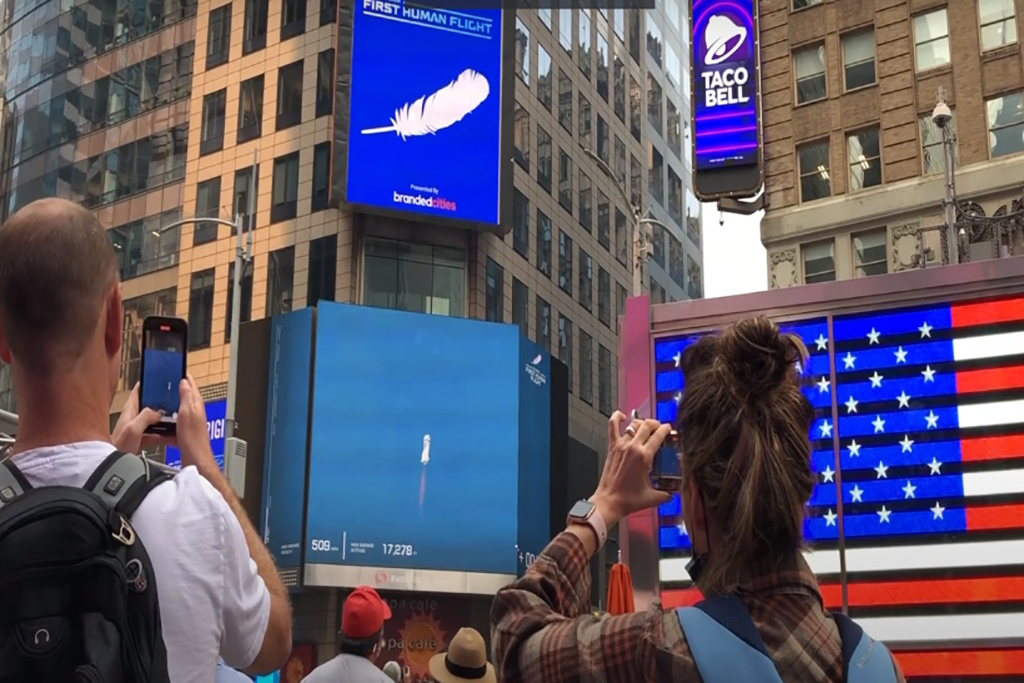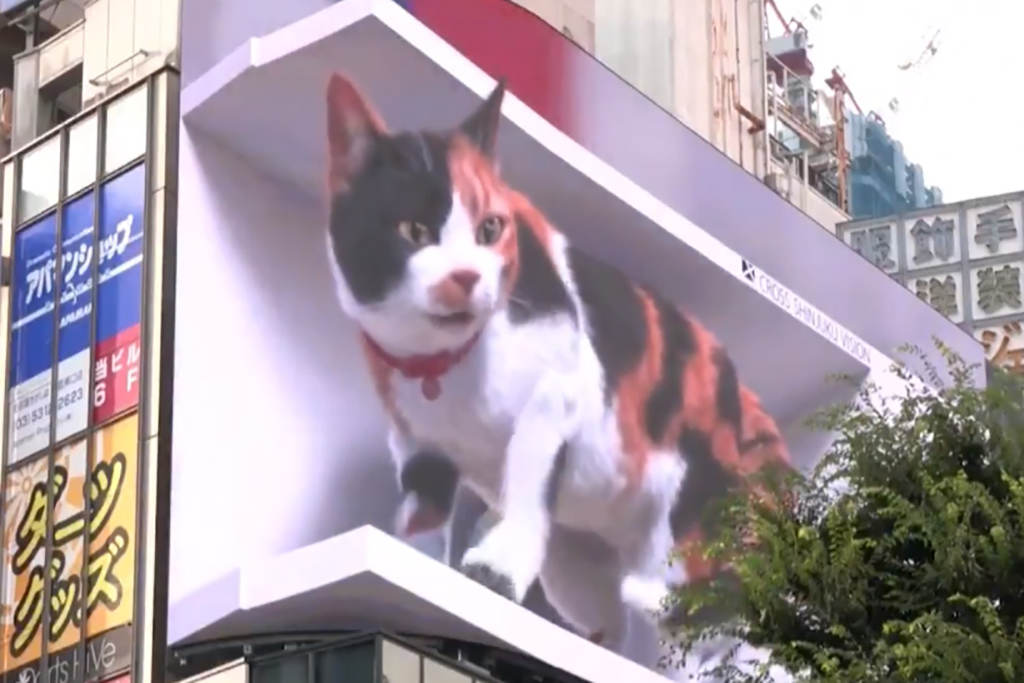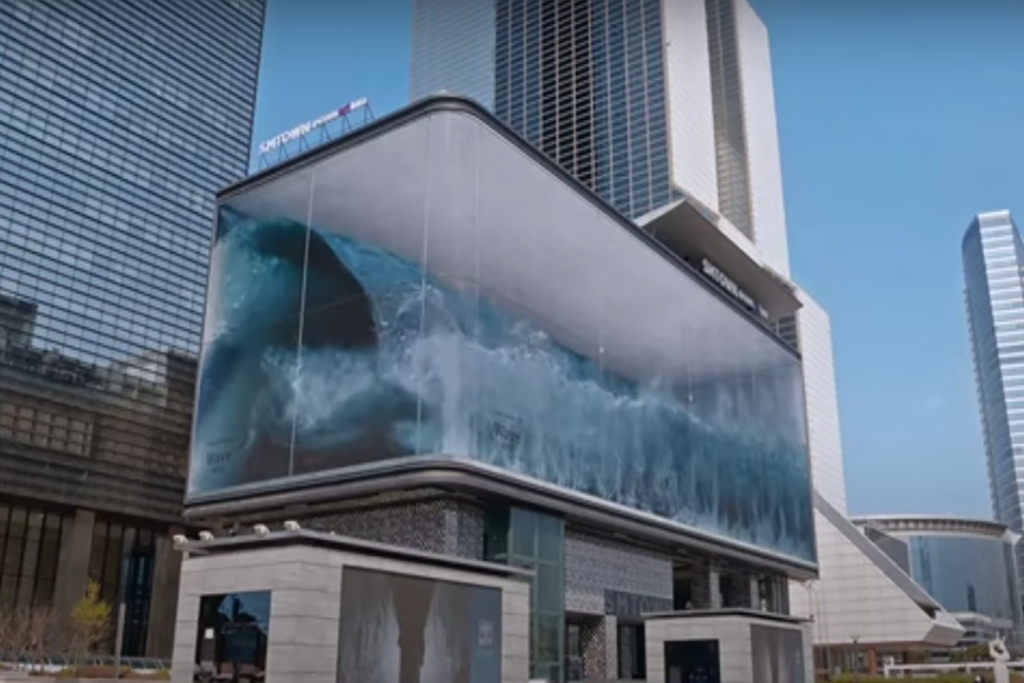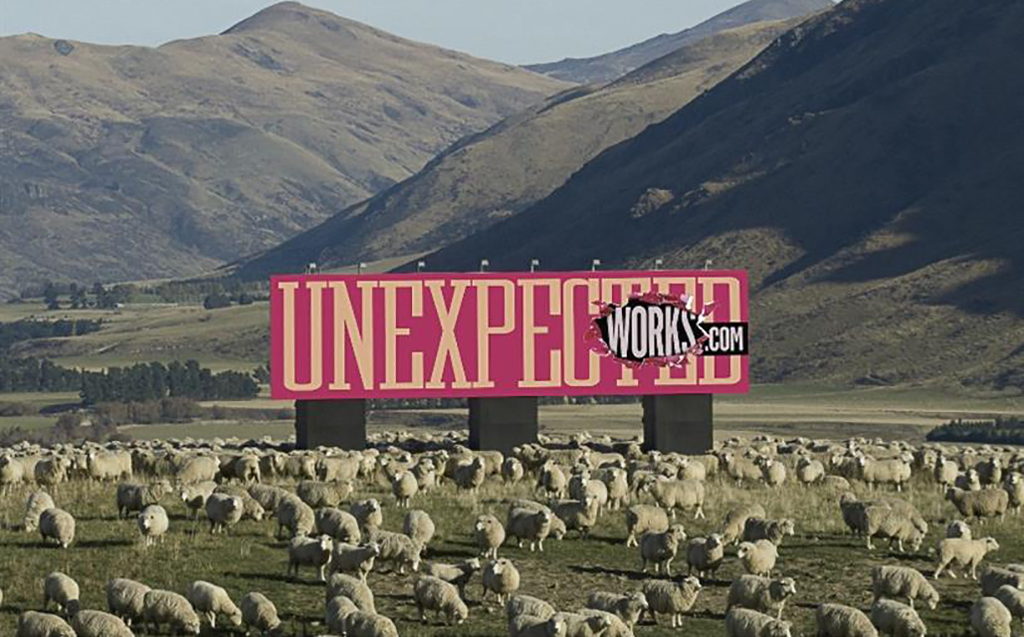Jeff Bezos made history when Blue Origin’s first human flight rocketed him and three others into space on Tuesday.
People could watch the monumental moment on digital billboards on the Thomson Reuters building in Times Square in New York City, the Harmon Corner in Las Vegas and in the Yonge-Dundas district in Toronto, thanks to OOH company Branded Cities.
After a year and a half of pandemic restrictions, people are flocking to explore their neighborhoods and gather outside again, and brands are investing in OOH as a result. As OOH returns, brands are looking to capture consumer attention beyond a simple billboard.

Nearly half (45%) of adult Americans (ages 18-54) are noticing OOH advertising more than before the pandemic began, according to Out of Home Advertising Association of America (OAAA), in partnership with The Harris Poll. Sixty-nine percent of adults also say that positive awareness of their surroundings increased after COVID-19 restrictions were lifted.
People are also on the move again, with Americans walking (40%), driving (29%) and biking/scootering (27%) more than they did at the start of the pandemic.
Billboards tend to get the most attention and the highest consumer reach among ad formats, but only when people are outside to see them. According to Statista, 80% of Americans noticed a billboard ad in 2019.
As global brands follow consumers back outside and into the market, they’re upleveling their creativity and innovation in OOH campaigns.
Havas Middle East and Jack Morton Worldwide created a swimmable billboard for the launch of Adidas’ inclusive Burkini swimwear collection, for example. Women — especially influencers, brand ambassadors and the media — were invited to swim inside of the billboard at a popular beach in Dubai in July.
The billboard was five meters high, three meters deep and used 11,500 gallons of water. Footage inside the billboard was streamed to Dubai’s largest digital display. The campaign aimed to send the message that the water embraces women of all types.
In Tokyo, a gigantic 3D cat appeared on a 1,664-square-foot curved LED screen in the Shinjuku district on July 12. The cat, which appears in 4K resolution, moves around, meows and naps from 7 a.m. until 1 a.m. each day.

Cross Space, the company behind the billboard, is live-streaming 24-hour views of the cat on YouTube.
Similarly, D’strict, a digital media tech company, put a giant wave on an LED display in Seoul’s Gangnam District in May. For one minute every hour, the display looked like a large tank about to pour water over the heads of passersby.

Brands are also getting innovative with static OOH billboards. Subaru Canada, for instance, launched a series of custom-built OOH ads for its 2021 Ascent, the company’s largest vehicle ever. To emphasize the car’s grand size, one OOH poster is so large that it stretches beyond the frame to the wall. Another poster is curved to fit inside of its metal frame, and a third uses special concertinaed folds to fit the poster into a frame with glass.
Agencies are also applying their newfound creativity with billboards inward. DDB, Omnicom’s global creative agency network, unveiled a new brand promise, “Unexpected Works,” in May on a billboard on a sheep farm in Garston, New Zealand. The campaign called for people to visit www.unexpectedworks.com to read the story behind the Unexpected Works philosophy.

Each of these campaigns demonstrates how OOH can extend into the digital world. DDB’s Unexpected Works billboard, for example, wasn’t meant to be seen by passersby on a remote sheep farm, but rather drum up media interest and conversation on social media.
Other executions seem to be having the same effect, with Tokyo’s giant cat and Dubai’s swimmable billboard drawing extensive media coverage
Although OOH advertising slowed during the pandemic, it birthed a trend of post-lockdown creativity that seems to be picking up speed — all the way to infinity and beyond.







